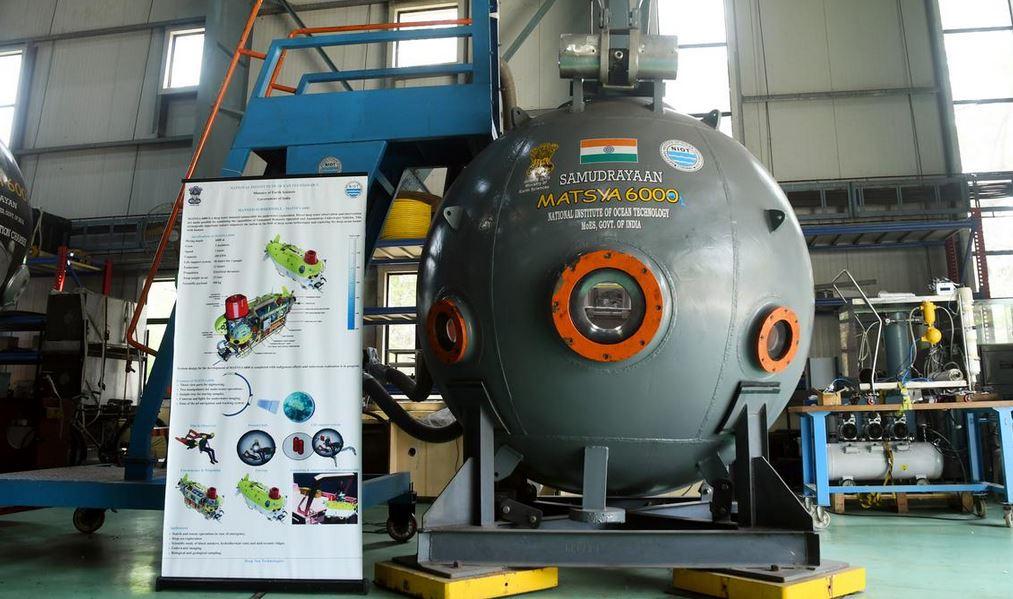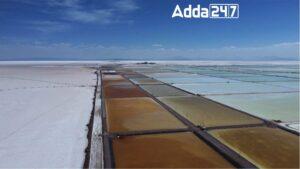India’s Deep Ocean Mission (DOM) marks a significant stride in underwater exploration, aiming to delve 6,000 meters into the ocean depths. Spearheaded by the Ministry of Earth Sciences (MoES), DOM encompasses diverse pillars, each contributing uniquely to India’s ambitious foray into the oceans.
Pillars of DOM:
1. Technological Advancements for Deep-Sea Mining and Submersible Exploration
- DOM focuses on developing indigenous technologies, including a manned submersible named Matsya6000, equipped with scientific sensors and tools.
- The submersible will mine polymetallic nodules from the central Indian Ocean, containing valuable metals like copper, manganese, nickel, and cobalt.
- Testing and experimentation at 500 meters will precede the full 6,000-meter depth capability, ensuring safety and functionality.
2. Ocean Climate Change Advisory Services:
- DOM involves ocean observations and models to understand climate change patterns, aiding in future climate projections.
3. Technological Innovations for Deep-Sea Biodiversity Conservation:
- Research efforts are directed toward exploring and conserving deep-sea biodiversity, fostering environmental preservation.
4. Deep-Ocean Survey and Exploration:
- DOM aims to identify potential sites of multi-metal hydrothermal sulphides mineralization along the Indian Ocean mid-oceanic ridges, contributing to mineral resource exploration.
5. Harnessing Oceanic Energy and Freshwater:
- Research initiatives focus on extracting energy and freshwater from the ocean, exploring sustainable resources.
6. Establishing Advanced Marine Station for Ocean Biology:
- Creation of a Marine Station for Ocean Biology serves as a hub nurturing talent and innovation in ocean biology and blue biotechnology.
Strategic Depth Selection
- India’s choice of 6,000 meters aligns with the presence of valuable resources, such as polymetallic nodules and sulphides, at depths ranging from 3,000 to 5,500 meters in the central Indian Ocean.
- Strategic allocation of 75,000 sq. km by the United Nations International Seabed Authority (ISA) reinforces India’s focus on sustainable resource extraction within its Exclusive Economic Zone and central Indian Ocean territory.
Challenges in Deep-Ocean Exploration
- High Pressure Challenges: Deep oceans exert immense pressure, requiring meticulously designed equipment to withstand the conditions.
- Soft Ocean Bed: Landing and maneuvering heavy vehicles become challenging due to the soft and muddy ocean bed, leading to potential sinking.
- Material Extraction Complexity: Extracting materials demands significant power and energy, posing logistical challenges.
- Visibility Issues: Limited natural light penetration complicates visibility, differentiating it from space exploration.
Matsya6000: India’s Leap in Oceanic Exploration
- Design Features: Matsya6000, India’s flagship submersible, accommodates three crew members, equipped with scientific tools for observations, sample collection, and experimentation.
- Technological Advancements: Constructed from titanium alloy, Matsya6000 withstands pressures up to 6,000 bar, showcasing cutting-edge engineering.
- Versatility: Matsya6000 combines features of Remote Operated Vehicles (ROVs) and Autonomous Remote Vehicles (AUVs), operating untethered for deep-sea observation missions.
- Unique Ecosystem of Underwater Vehicles: India’s comprehensive underwater vehicle ecosystem includes deep-water ROVs, polar ROVs, AUVs, and coring systems, placing India at the forefront of global oceanic exploration.



 Mankind Pharma Acquires Bharat Serums an...
Mankind Pharma Acquires Bharat Serums an...
 Discovery of Lithium Resources in Mandya...
Discovery of Lithium Resources in Mandya...
 What is Blue Screen of Death?
What is Blue Screen of Death?
